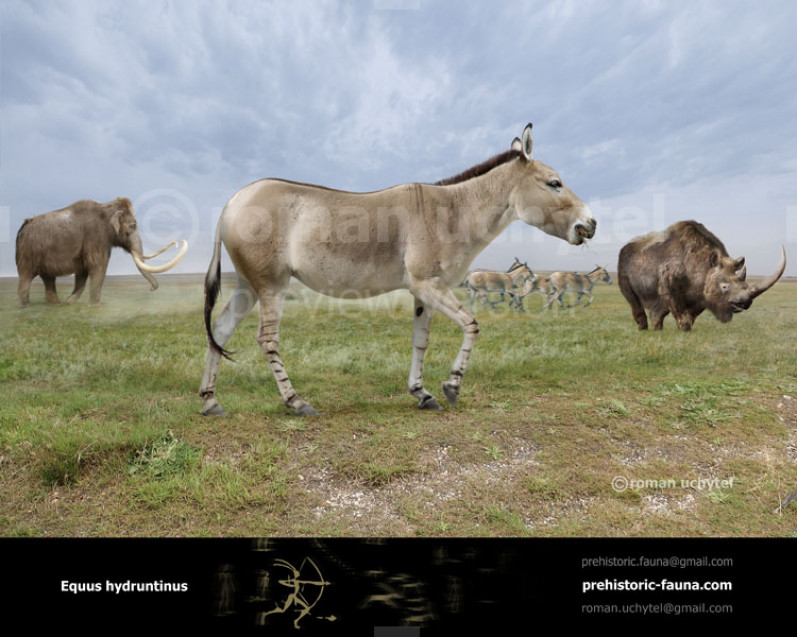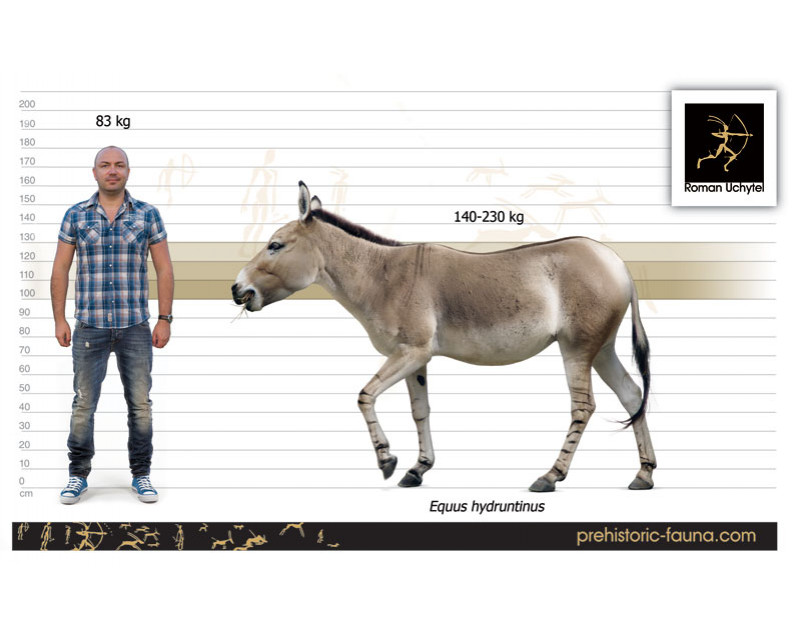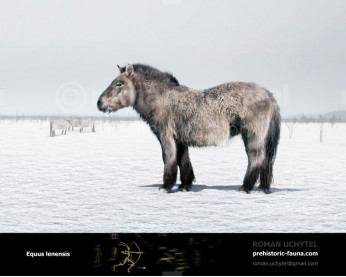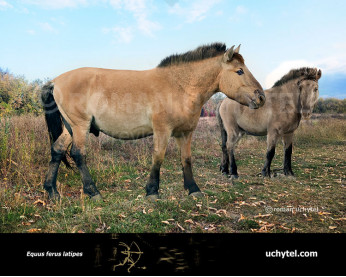European ass (Equus hydruntinus)
419419European ass (Equus hydruntinus ( Regalia, 1904))
Order: Perissodactyla
Family: Equidae
Expansion: from the middle and late Pleistocene of Eurasia.
Dimensions: 1,7 - 2 m in length, 115-130 cm in height, 140 - 230 kg of weight
The European ass (Equus hydruntinus) is an extinct equine from the middle and late Pleistocene of Eurasia. It appeared first in the fossil report 300,000 years before present and did not disappear until Holocene times. In the late Pleistocene it was widespread throughout much of western Eurasia from the Middle East to Europe, especially along the Mediterranean, with fossil reports from Sicily, Turkey, Spain, France and Portugal. In the east the range apparently stretched at least to the Volga and to Iran. In the north it reached almost to the North Sea in Germany. It is possible that the Iberian "cebro", extinct in the wild from the 16th century, could correspond to the Equus hydruntinus, although the word "cebro" comes from Latin equiferus meaning 'wild horse'. Morphologically the European ass can be distinguished from asses and hemiones particularly by its molars and the relatively short nares. The exact systematic position is still not fully clear, but genetic and morphological analysis suggest that it is closely related to the Asiatic wild ass.
From Wikipedia, the free encyclopedia
European ass (Equus hydruntinus ( Regalia, 1904))
Order: Perissodactyla
Family: Equidae
Expansion: from the middle and late Pleistocene of Eurasia.
Dimensions: 1,7 - 2 m in length, 115-130 cm in height, 140 - 230 kg of weight
The European ass (Equus hydruntinus) is an extinct equine from the middle and late Pleistocene of Eurasia. It appeared first in the fossil report 300,000 years before present and did not disappear until Holocene times. In the late Pleistocene it was widespread throughout much of western Eurasia from the Middle East to Europe, especially along the Mediterranean, with fossil reports from Sicily, Turkey, Spain, France and Portugal. In the east the range apparently stretched at least to the Volga and to Iran. In the north it reached almost to the North Sea in Germany. It is possible that the Iberian "cebro", extinct in the wild from the 16th century, could correspond to the Equus hydruntinus, although the word "cebro" comes from Latin equiferus meaning 'wild horse'. Morphologically the European ass can be distinguished from asses and hemiones particularly by its molars and the relatively short nares. The exact systematic position is still not fully clear, but genetic and morphological analysis suggest that it is closely related to the Asiatic wild ass.
From Wikipedia, the free encyclopedia

1-797x638.jpg)
-797x638.jpg)


1-70x56.jpg)
-70x56.jpg)


-346x277.jpg)

